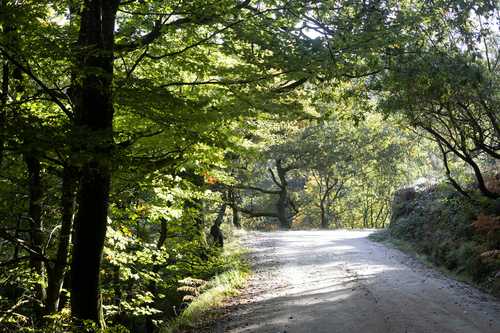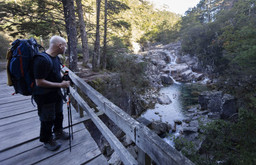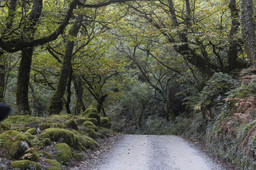
Conscious walking: Being present in the world around you
Often when I’m walking I see myself trying to get somewhere as fast as possible, without questioning the need to be in such a rush. As soon as I’m out of the door, I rush to the supermarket, or to work, or wherever it is that I am going. I’m not aware of the experience of actually walking. When I get to my destination, I have no recollection of the journey; I was on autopilot. Walking in this way, I miss most of what is around me and the experience of being alive during those periods.
It is only when I decide to slow down and become more aware and mindful that I begin to notice things, and that they come to life in my mind. Rather than being focused on the goal of arriving somewhere, my mind becomes focused on the act of walking itself and being present in my surroundings as I walk.
This way, I start to notice things more clearly and fully: people, buildings, colors, shapes, sounds, and even the smells around me. The experience of walking on a high street, in a field, a forest, or on a beach, starts to feel very different and more enjoyable.

As I slow down, so does everything else I am experiencing. My senses have more time to receive the stimuli that the environment is providing and I can be much more aware of them.
The experience of walking, seeing, listening, and smelling – and even the feeling of my internal landscape – becomes richer and more complete. An experience emerges which is more profound than one constantly conditioned by rushing, stress, anxiety, frustration, impatience, agitation, or even anger.
Walking consciously can become a practice, something that we decide to do consciously in different environments – a way to relate to and come to know those environments more deeply.
In order to make this mindful walking a practice, I decided to practice in a particular section of the high street, or on my walk to work, or especially my walk back home. That way, I could begin to shed the issues, stress, anxiety, and tiredness accumulated during the working day, so I wouldn’t arrive home tired or irritated.
Doing this on a regular basis, you will become aware of the times when you are not walking in mindfulness: you may catch yourself rushing from one place to another when there is no need, simply because it has become a habit.
By becoming more deeply in touch with the environment, I have also become more deeply in touch with myself. The act of walking has become a means in itself.
Short guidance on walking meditation
The best way to start walking meditation is to relax and drop the idea that you want to achieve something – even walking meditation itself.
Relax your body, especially your belly. Approach this experience with kindness, gentleness, and openness; you are doing it for enjoyment and to be nourished.
Walking in meditation means to be aware that we are walking. We aim to walk in a relaxed and leisurely way, feeling and enjoying every step more and more.
We move our attention from the activity of our thinking mind to the sensations of our body, starting the process of freeing ourselves from thinking: from our regrets about the past, our fears and anxieties about the future, and our current preoccupations. 🦋

Bringing a gentle attentiveness to our footsteps, we become more aware of the contact of our feet with the ground and the flow of our breathing. From there, we start to harmonize our steps with our breathing, taking two or three steps as we breathe in and three or four steps as we breathe out (depending on your lungs and the natural rhythm of your steps).
As we continue walking, synchronizing our breathing and our steps, we become aware of our whole-body walking, and can relax any tension in our shoulders or arms, or any other tense area of our body. ☁️
We can open our ears to receive and be conscious of the sounds around us, lifting our eyes to enjoy the trees, the horizon, or the people around us. Being aware of our main five senses, we start to experience the feeling of arriving in the present moment. Our walking becomes a relaxing, enjoyable, and nurturing experience instead of one fuelled by stress and anxiety, or one which occurs on autopilot mode. Enjoy!
🎧 To enjoy a guided walking session, go to: ‘Guided Meditations in Nature’ by Joe Holtaway.

Michael Schwammberger was born in the UK but grew up in Spain, and has been practicing and studying Buddhist meditation and dharma since 1992, starting his Buddhist practice in Totnes, Devon, UK. In June 1996, he arrived in Plum Village, Thich Nhat Hanh’s monastery in southwest France, having been inspired by his book Peace Is Every Step. Deeply moved by the energy of the community spirit and by Thich Nhat Hanh, he stayed on and was ordained as a monk in 1997. Subsequently, he traveled extensively with Thich Nhat Hanh and was at times based in several of his monasteries in the USA. In 2012, Michael left the monastic life, but, as a lay dharma teacher, continued to spread awareness of Thich Nhat Hanh’s teachings and practices. He has led mindfulness courses and retreats in the UK, Ireland, France, Italy, Spain, South America, and Israel.
All photos courtesy of Michael Schwammberger
Earth.fm is a completely free streaming service of 1000+ nature sounds from around the world, offering natural soundscapes and guided meditations for people who wish to listen to nature, relax, and become more connected. Launched in 2022, Earth.fm is a non-profit and a 1% for the Planet Environmental Partner.
Check out our recordings of nature ambience from sound recordists and artists spanning the globe, our thematic playlists of immersive soundscapes and our Wind Is the Original Radio podcast.
You can join the Earth.fm family by signing up for our newsletter of weekly inspiration for your precious ears, or become a member to enjoy the extra Earth.fm features and goodies and support us on our mission.
Subscription fees contribute to growing our library of authentic nature sounds, research into topics like noise pollution and the connection between nature and mental wellbeing, as well as funding grants that support emerging nature sound recordists from underprivileged communities.
